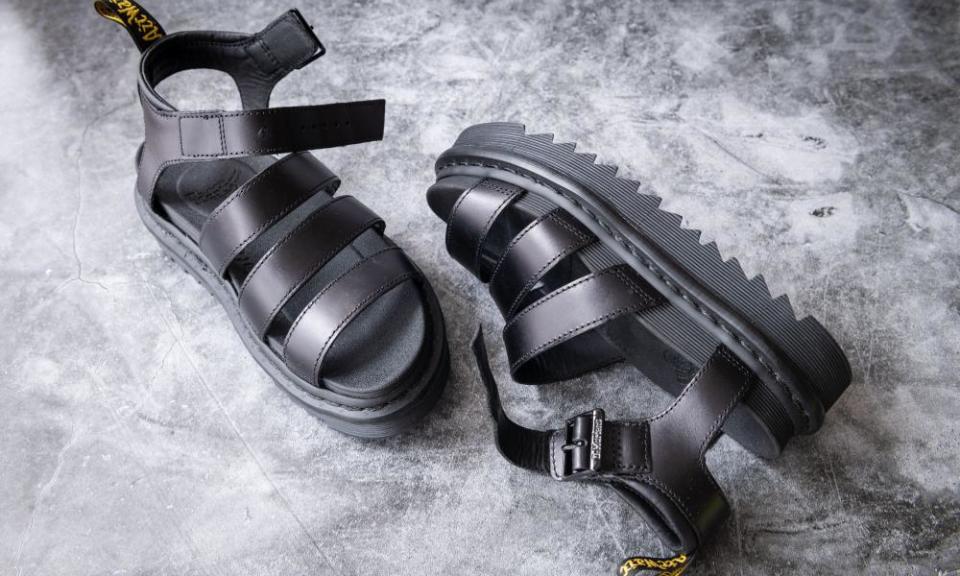Sales of Dr Martens sandals and shoes soar as boots slide

Dr Martens has revealed a slide in profits as sales of its key product – boots – fell 10% last year after the British brand made a string of errors at its US business and pulled back distribution in Latin America and China.
The footwear maker said sales of its chunky sandals and shoes had risen by about 50% to become almost a third of total sales, but boot sales had suffered, particularly in America, after it focused marketing on its other products and struggled with problems at a warehouse in Los Angeles.
The company also blamed what it called a “challenging consumer environment” for a fall in demand in the US as shoppers reined in their spending in the face of high inflation.
Related: UK supermarkets cut diesel prices by 7p a litre after watchdog concerns
First created in 1945 by a young German army doctor, Klaus Märtens, who designed an air-cushioned sole to help his recovery from a broken foot, the boots were first introduced to Britain in 1960 by a Northamptonshire footwear maker.
Their sturdy design meant the boots were initially adopted by postal delivery workers and factory staff, but the classic eight-holed 1460 boots also quickly found favour with punks.
Kenny Wilson, the Dr Martens chief executive, said the decline in sales of boots last year was not down to the footwear falling out of fashion.
He said sales had risen 12% in the UK, driven by boots, and the brand had enjoyed strong sales across Europe and Japan, another important market. Wilson added that if planned changes to distribution agreements in China and Latin America were excluded then global boot sales were up 2%.
In the past 12 months, the footwear group has been battling growing costs of £15m after a string of “operational mistakes” at its Los Angeles distribution centre, which opened last year. The group was forced to open temporary US warehouses in late 2022 after it bought too much stock and suffered supply chain bottlenecks.
The costs of rectifying the US problems alongside slower than hoped for sales growth, investment in new stores, marketing and staff led to a 26% tumble in annual profit before tax to to £159m in the year to 31 March. Annual sales reached £1bn for the first time, a 10% increase on a year earlier.
Wilson said the company had “undertaken detailed reviews to understand” why it had experienced problems in the US, the brand’s largest country by revenues.
However, he said profit margins were likely to be lower than previously hoped in the year ahead as the company continued to invest in its infrastructure.
The news sent Dr Martens shares tumbling by as much as 14% during morning trading on Thursday, before recovering some of their losses.
The company first floated two-and-a-half years ago, in January 2021, debuting at 370p a share, giving it a valuation of £3.7bn. They are now trading at about 140p, more than 60% lower than their opening price, and have almost halved over the past year, amid profit warnings.
The bootmaker’s underlying annual profits slid 7% to £245m, below the £260m forecast it made last November after two profit warnings in the space of a few months.
The company has brought in price rises for the past two years, announcing a 6% increase last November to cover higher costs of energy, labour and the leather and bouncy soles used to make its footwear.
The latest price rise, which will come into force in July , will add about £10 to the cost of its classic boot, from £159 now.
Wilson said that he anticipated Dr Martens’ cost inflation to continue into next year but the rate had slowed to 2% for spring/summer next year, as the price of leather and shipping had reduced.

 Yahoo Finance
Yahoo Finance 